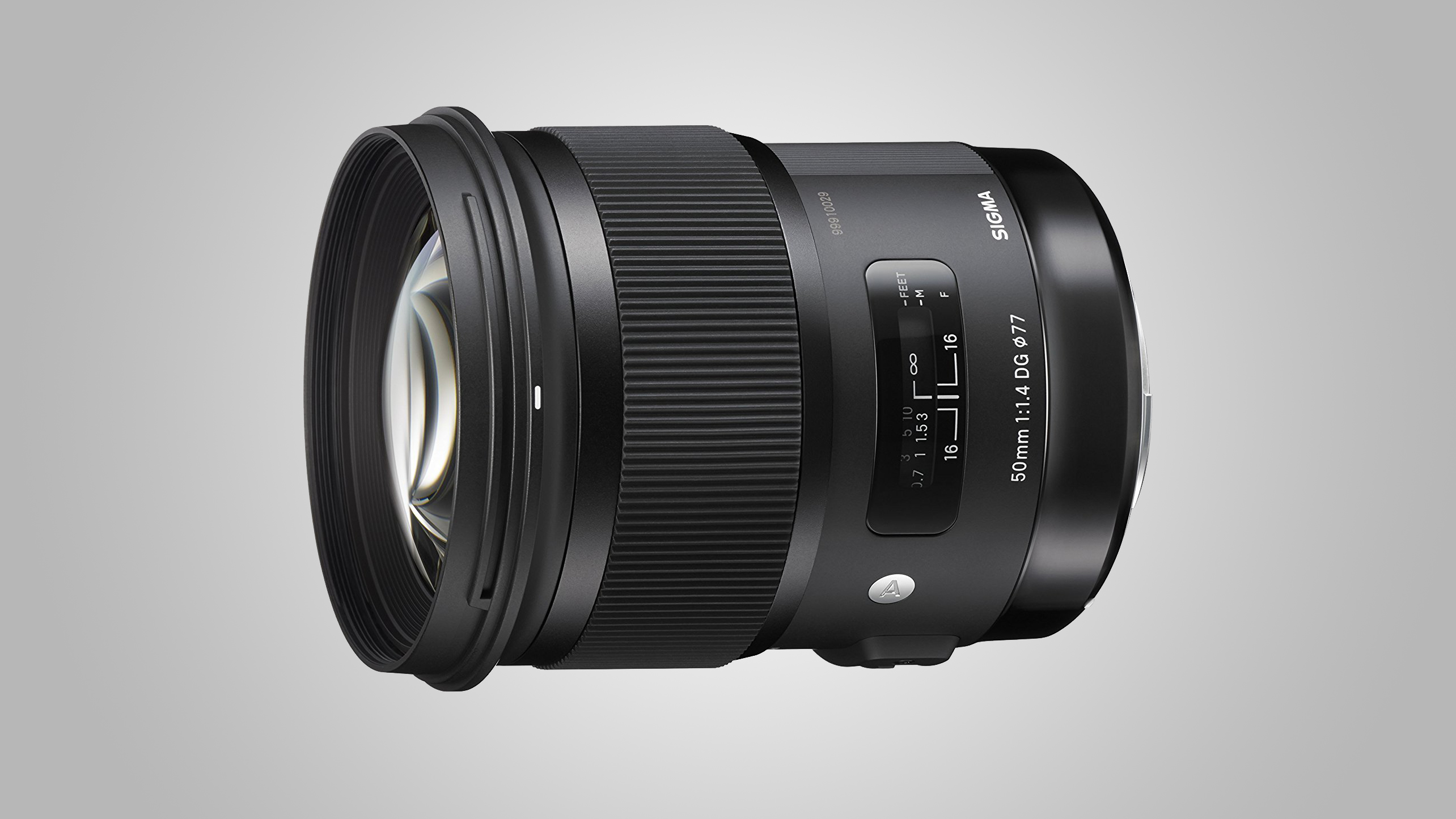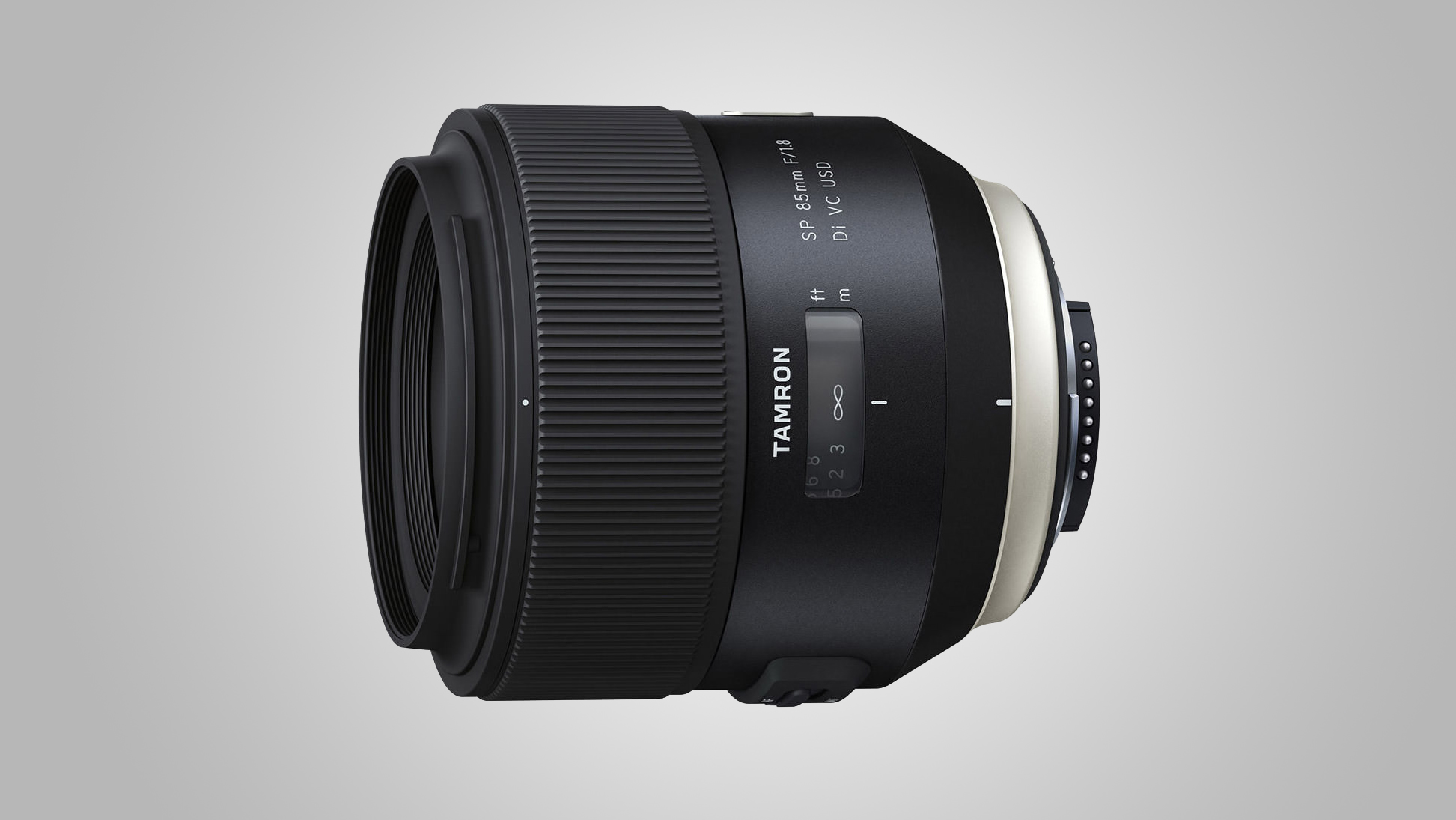Best portrait lens: fast prime lenses for Canon and Nikon DSLRs
For perfect portraiture, reach for a fast prime lens
Best portrait lenses for Nikon DSLRs
Why you can trust TechRadar
Most of Nikon’s 50mm and 85mm lenses are refreshingly affordable, although the AF-S 85mm f/1.4G commands a high price. All of the own-brand Nikkors face stiff competition from premium primes manufactured by Sigma and Tamron. The independently manufactured lenses are all fairly recent designs, with high-grade construction, excellent all-round performance and beautiful image quality. There’s certainly plenty of choice on offer.


1. Nikon AF-S 50mm f/1.8G
Specifications
Reasons to buy
Reasons to avoid
Despite its downmarket asking price, the build quality of this budget Nikon lens feels pretty good, right down to its weather-sealed metal mounting plate. It’s a bit pricier than the competing Canon lens but at least the Nikon comes complete with a hood, so you don’t need to buy one as an ‘optional extra’. Physically, this lens is almost as large as Nikon’s 50mm f/1.4 but it’s nearly 100g lighter, weighing in at just 185g. The autofocus system isn’t particularly quick but it’s quiet and comes complete with manual override. Bokeh is pretty smooth at f/1.8 but defocused pinpoints of light take on a clearly visible heptagonal shape when stopping down a little, as the seven-blade diaphragm isn’t particularly well-rounded. Barrel distortion is also a little worse than average, but much reduced when using the lens on a DX rather than FX camera, where it’s focal length is ideal for portraiture.


2. Nikon AF-S 50mm f/1.4G
Specifications
Reasons to buy
Reasons to avoid
This lens is rather smaller and lighter than most of the latest 50mm f/1.4 prime lenses, with a lower number of optical elements. The older design keeps things simple, with eight elements in total. By comparison, the Sigma 50mm Art lens has 13 elements and weighs about three times as much. Both competitors are two-thirds of an f/stop faster than the Nikon 50mm f/1.8 lens, and have nine rather than seven diaphragm blades, enabling a better-rounded aperture when stopping down a little. Unlike the Sigma, the Nikon’s sharpness drops off noticeably at f/1.4 but you could argue that it gives a pleasant softness for portraiture. Stop down to f/1.8 and this lens becomes sharper than Nikon’s 50mm f/1.8 lens at the same aperture. Image quality is good overall but ‘bokeh fringing’ (longitudinal chromatic aberrations) is more noticeable than usual when shooting wide-open. All things considered, this lens is rather better than Nikon’s 50mm f/1.8 and it’s still pretty good value at the price.


3. Nikon AF-S 85mm f/1.8G
Specifications
Reasons to buy
Reasons to avoid
More ideal for portraiture on FX (full-frame) bodies than Nikon’s 50mm lenses, this one retains a fairly simple optical design, based on nine elements. By comparison, the latest Tamron and Sigma 85mm lenses have 13 and 14 elements respectively. A plus point of the Nikon’s more dated design is that it’s smaller and lighter, weighing only half as much as the Tamron and about a third of the weight of Sigma. A downside is that it lacks stabilization, featured in the Tamron lens. Like Nikon’s 50mm f/1.8 lens, the aperture is based on a seven-blade diaphragm, and it’s not particularly well-rounded when stopping down a little. Defocused pinpricks of light can take on very distinct heptagonal shapes. Even so, when shooting at f/1.8, sharpness is very good and bokeh is nice and smooth, although vignetting is quite noticeable. On balance, it’s a good performer and great value for an own-brand Nikon lens.


4. Nikon AF-S 85mm f/1.4G
Specifications
Reasons to buy
Reasons to avoid
Compared with Nikon’s 85mm f/1.8 lens, this one has a single extra optical element, two more diaphragm blades, and a faster aperture rating by two-thirds of an f/stop. It’s also bigger, heavier and nearly three times as expensive. On the other hand, it’s still smaller and lighter than both of the competing Sigma and Tamron 85mm lenses, despite the Tamron having a slower f/1.8 aperture rating. Build quality feels more solid than in the other Nikon 50mm and 85mm lenses, and this is the only one of the four to feature nano-structure coatings, which help to further reduce ghosting and flare. As with the Nikon 50mm f/1.4 lens, sharpness drops off much more noticeably at the wide end of the aperture range than with competing Sigma f/1.4 Art lenses, but sharpness is impressive between f/2.8 and f/11. Bokeh is noticeably better than from the Nikon f/1.8 lenses when stopping down a little, helped by the better-rounded nine-blade diaphragm.


5. Nikon AF-S 105mm f/1.4E ED
Specifications
Reasons to buy
Reasons to avoid
Noticeably bigger and over 50 per cent heavier than its 85mm f/1.4 stablemate, the overall aim of the optical design is to deliver excellent sharpness across the whole image frame, even when shooting wide-open. To deliver the requisite image quality, the lens has a complex optical path, comprising 14 elements within nine groups. A well-rounded nine-blade diaphragms helps to retain the quality of bokeh when stopping down a little. The combination of its 105mm focal length and f/1.4 aperture makes this a great portrait lens and, crucially, it delivers excellent contrast, sharpness and color rendition along with beautifully smooth bokeh.


6. Sigma 50mm f/1.4 DG HSM | Art for Nikon
Specifications
Reasons to buy
Reasons to avoid
If bigger is better, this Sigma 50mm f/1.4 rules the roost for APS-C format portraiture. It’s massive compared with Nikon’s 50mm f/1.4 lens, and nearly three times heavier. It also has a much more complex optical layout, based on a newer and more high-tech design. Build quality is excellent and, despite the lack of weather-seals, it feels every inch a pro-grade lens. Image quality is similarly up-market, with superb contrast and sharpness along with minimal colour fringing, distortion and vignetting. Handling is very refined, despite the comparatively large size of the lens, and the ring-type ultrasonic autofocus system is both rapid and whisper-quiet, with the usual full-time manual override. For overall performance and image quality, this Sigma is the 50mm lens to beat.


7. Sigma 85mm f/1.4 DG HSM | Art for Nikon
Specifications
Reasons to buy
Reasons to avoid
A fairly recent addition to Sigma’s Global Vision line-up, this ‘Art’ lens was launched in 2016, some two and a half years after its 50mm sibling. It’s unusually hefty for an 85mm lens, measuring 95 x 126mm and weighing in at 1,130g. While the standard of build quality is similarly impressive in both Sigma lenses, the 85mm adds weather-seals for a ‘dust- and splash-proof’ construction. The ring-type autofocus system is super-fast and whisper-quiet but, as with the Sigma 50mm lens, there’s no image stabilization. Image quality is simply stunning in all respects and sharpness across the entire frame is exceptional, even when shooting wide-open at f/1.4. Overall, the size and weight of the lens make it quite a handful, but there’s no beating it for performance.


8. Tamron SP 45mm f/1.8 Di VC USD for Nikon
Specifications
Reasons to buy
Reasons to avoid
In this category of prime lens, examples with an f/1.8 rather than f/1.4 aperture rating are often viewed as poor relations. However, this lens has first-rate build quality, complete with weather-seals, and adds the bonus of a highly effective 4-stop image stabilizer, or ‘Vibration Compensation’ system, as Tamron calls it. The ring-type ultrasonic autofocus system is similarly effective, with fast yet very quiet performance, and the usual bonus of full-time manual override. Overall, it significantly outguns the own-brand Nikon 50mm lenses for features, and the Tamron is equally impressive when it comes to image quality. It’s not a particularly small or lightweight lens but, at 540g, it’s not unduly weighty and makes a great portraiture lens for APS-C format DSLRs.


9. Tamron SP 85mm f/1.8 Di VC USD for Nikon
Specifications
Reasons to buy
Reasons to avoid
Not necessarily a drawback, the f/1.8 rather than f/1.4 aperture rating of this up-market prime enables a more lightweight build, especially compared with the competing Sigma 85mm Art lens. And it still enables a very tight depth of field when shooting wide-open. As with the Tamron 45mm, this lens has a robust, weather-sealed construction, but this time there’s also a keep-clean fluorine coating on the front element. Handling is excellent and the 4-stop image stabilizer is a major bonus for handheld portraiture in dull or indoor lighting conditions. Outright sharpness at wide apertures isn’t quite as impressive as from the competing Sigma lens but it’s not far off, and very consistent across the entire image frame. Overall, it’s a great buy at half the price of Nikon’s 85mm f/1.4 lens, and the stabilizer can make a massive difference in handheld portraiture.

- Best Nikon lenses
- Best wide-angle lenses for Nikon DSLRs
- Best telephoto lenses for Nikon DSLRs
- Best super telephoto lenses for Nikon DSLRs
- Best macro lenses for Nikon DSLRs
- 1
- 2
Current page: Best portrait lenses for Nikon DSLRs
Prev Page Best portrait lenses for Canon DSLRsSign up for breaking news, reviews, opinion, top tech deals, and more.